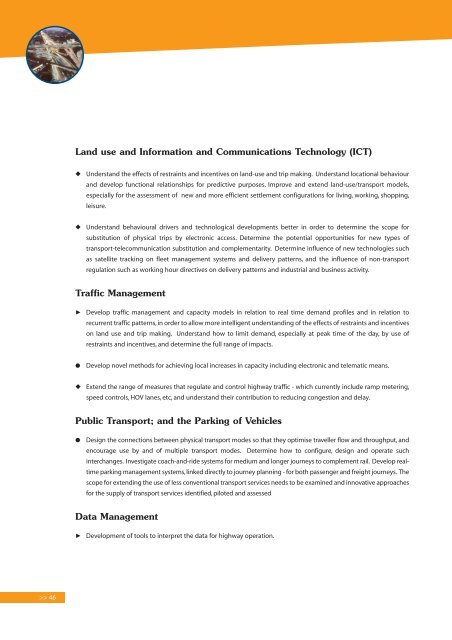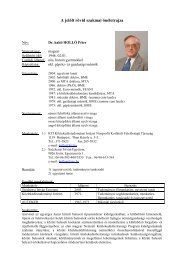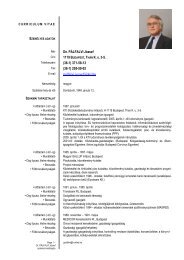VISION: Road Transport in Europe 2025 - FEHRL
VISION: Road Transport in Europe 2025 - FEHRL
VISION: Road Transport in Europe 2025 - FEHRL
You also want an ePaper? Increase the reach of your titles
YUMPU automatically turns print PDFs into web optimized ePapers that Google loves.
46<br />
Land use and Information and Communications Technology (ICT)<br />
◆ Understand the effects of restra<strong>in</strong>ts and <strong>in</strong>centives on land-use and trip mak<strong>in</strong>g. Understand locational behaviour<br />
and develop functional relationships for predictive purposes. Improve and extend land-use/transport models,<br />
especially for the assessment of new and more efficient settlement configurations for liv<strong>in</strong>g, work<strong>in</strong>g, shopp<strong>in</strong>g,<br />
leisure.<br />
◆ Understand behavioural drivers and technological developments better <strong>in</strong> order to determ<strong>in</strong>e the scope for<br />
substitution of physical trips by electronic access. Determ<strong>in</strong>e the potential opportunities for new types of<br />
transport-telecommunication substitution and complementarity. Determ<strong>in</strong>e <strong>in</strong>fluence of new technologies such<br />
as satellite track<strong>in</strong>g on fleet management systems and delivery patterns, and the <strong>in</strong>fluence of non-transport<br />
regulation such as work<strong>in</strong>g hour directives on delivery patterns and <strong>in</strong>dustrial and bus<strong>in</strong>ess activity.<br />
Traffic Management<br />
Develop traffic management and capacity models <strong>in</strong> relation to real time demand profiles and <strong>in</strong> relation to<br />
recurrent traffic patterns, <strong>in</strong> order to allow more <strong>in</strong>telligent understand<strong>in</strong>g of the effects of restra<strong>in</strong>ts and <strong>in</strong>centives<br />
on land use and trip mak<strong>in</strong>g. Understand how to limit demand, especially at peak time of the day, by use of<br />
restra<strong>in</strong>ts and <strong>in</strong>centives, and determ<strong>in</strong>e the full range of impacts.<br />
● Develop novel methods for achiev<strong>in</strong>g local <strong>in</strong>creases <strong>in</strong> capacity <strong>in</strong>clud<strong>in</strong>g electronic and telematic means.<br />
◆ Extend the range of measures that regulate and control highway traffic - which currently <strong>in</strong>clude ramp meter<strong>in</strong>g,<br />
speed controls, HOV lanes, etc, and understand their contribution to reduc<strong>in</strong>g congestion and delay.<br />
Public <strong>Transport</strong>; and the Park<strong>in</strong>g of Vehicles<br />
● Design the connections between physical transport modes so that they optimise traveller flow and throughput, and<br />
encourage use by and of multiple transport modes. Determ<strong>in</strong>e how to configure, design and operate such<br />
<strong>in</strong>terchanges. Investigate coach-and-ride systems for medium and longer journeys to complement rail. Develop realtime<br />
park<strong>in</strong>g management systems, l<strong>in</strong>ked directly to journey plann<strong>in</strong>g - for both passenger and freight journeys. The<br />
scope for extend<strong>in</strong>g the use of less conventional transport services needs to be exam<strong>in</strong>ed and <strong>in</strong>novative approaches<br />
for the supply of transport services identified, piloted and assessed<br />
Data Management<br />
Development of tools to <strong>in</strong>terpret the data for highway operation.






